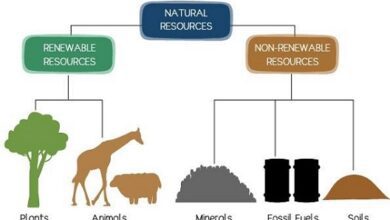17 goals of sustainable development/origin/purpose/by the UN
What Are The Sustainable Development Goals?
The Sustainable Development Goals (SDGs) are part of a broader project, the 2030 Agenda , adopted in 2015 during the United Nations Summit on Sustainable Development. In this article we will provide you the 17 goals of sustainable development.
They correspond to a global set of goals that follow and expand on the Millennium Development Goals (MDGs), agreed by UN member states in 2000.
There are 17 objectives – 16 thematic and 1 on means of implementation – broken down into 169 goals and 231 indicators.
Together they chart a universal plan to achieve a better future. – leaving no one behind.
We can say that the SDGs represent the most ambitious agreement for sustainable development that world leaders have ever made.
That’s because it integrates all three main aspects of sustainable development : social, economic and environmental.
Furthermore, the SDGs require the commitment and collaboration of both civil society and the public and private sectors for a more equitable and livable world.
How Did The SDGs Come About?
The SDGs were developed as an extension of the MDGs, adopted during the Millennium Summit in 2000.
The MDGs were specific and measurable objectives, proposed to address the main needs of the poorest countries. .
There were eight goals:
- Eradicate extreme poverty and hunger
- Achieve universal primary education
- Promoting gender equality and empowering women
- Reduce infant mortality
- improve maternal health
- Combat HIV/AIDS, malaria and other diseases
- Ensuring environmental sustainability
- Develop a global partnership for development.
These objectives have come under heavy criticism because, because they are so focused, they have left out other equally important areas.
Even so, the MDGs managed to show that targets work , as they helped to eradicate poverty – but not completely, reduced the infant mortality rate, expanded access to clean water, among others.
However, the deadline given for the MDGs expired in 2015, and the United Nations decided to stipulate a new sustainable development agenda to finalize the work.
In this context, the Sustainable Development Goals emerged to replace the Millennium Development Goals.
The central idea of the SDGs is to absorb what has not been met by the MDGs , integrating themes such as sustainable consumption, climate change , economic inequality, innovation, diversity, peace and justice .
In addition, they aim to involve various sectors of global society, such as governments and political leaders, civil society and public and private companies, to establish a better future.
When Were The SDGs Created?
Despite having been established in 2015, the SDGs are the result of the Rio+20 Summit in 2012, which determined the creation of an open working group to prepare a draft agenda.
This working group, with representatives from 70 countries, held its first meeting in March 2013 and published its final draft, with 17 suggestions, in July 2014.
Negotiations followed and the final text of the SDGs, as well as the preamble and accompanying declaration, were agreed in September 2015 at UN Headquarters in New York.
On January 1, 2016, the 17 Sustainable Development Goals officially entered into force and, by 2030, countries must mobilize efforts to achieve the agenda.
What Is The Purpose Of The SDGs?
Essentially, the Sustainable Development Goals serve as a guide for countries to commit to global development by 2030.
As we have seen, they cover different aspects of social development, environmental protection and economic growth.
In this way, the planned actions set a path in the coming years to end extreme poverty, fight inequality and injustice and protect our planet.
They are important not only because they indicate where we should be in 2030, but also because they describe new markets and opportunities. for companies around the world.
However, the success of the agenda depends on factors such as policies and development programs of each of the signatory countries.
What Are The SDGs By The UN?
From now on, we will show you which are the SDGs instituted by the UN, how they guide the world towards sustainability and the current status of each one.
We emphasize that the data and statistics on the progress of the SDGs were taken from the annual survey carried out by the UN itself since 2016.
Read now the17 goals of sustainable development.
SDG 1: End Poverty In All Its Forms, Everywhere
Building on the work of the MDGs, Goal 1 will aim to eradicate extreme poverty by 2030.
The expectation is to halve the proportion of people living on less than $1.90 a day, creating strong political, regional and international goals that favor this population.
According to the most recent data, the share of the world population in extreme poverty fell from 36% in 1990 to 16% in 2010 and 10% in 2015.
However, the pace of reduction is slowing, reaching around 8.6% in 2018 .
SDG 2: End Hunger, Achieve Food Security And Improved Nutrition And Promote Sustainable Agriculture
SDG 2 aims to eliminate hunger and end all forms of malnutrition.
The objective also incorporates economic aspects , such as doubling agricultural productivity and smallholder incomes by 2030, and investments in sustainable agriculture to prevent increased food production from harming the environment.
Given the growing global demand for food, it is estimated that world food production will need to double by 2050.
Recent data indicate a worrying increase in hunger after a prolonged decline.
An estimated 821 million people – approximately 1 in 9 people worldwide – were undernourished in 2017, up from 784 million in 2015.
SDG 3: Ensure Healthy Lives And Promote Well-Being For All At All Ages
The MDG experience has shown that health problems need to be seen in context, not in isolation.
Goal 3 continues along the same lines as the MDGs, for example with regard to neonatal, infant and maternal mortality, as well as communicable diseases such as HIV/AIDS, malaria and tuberculosis.
It also includes provisions on combating noncommunicable diseases, such as diabetes, and preventing traffic accidents and drug abuse.
Another goal for 2030 is to ensure universal access to sexual and reproductive health care, including family planning, information and education.
The figures show that some progress has already been made towards this goal.
For example, the under-five mortality rate dropped from 42 deaths per 1,000 live births in 2015 to 39 in 2017, an overall reduction of 49% compared to 77 deaths per 1,000 live births in 2000.
SDG 4: Ensure Inclusive And Equitable Quality Education And Promote Lifelong Learning Opportunities For All
Goal 4 aims to ensure that all children, adolescents and adults – especially the most marginalized and vulnerable – have access to education and training suited to their needs and the context in which they live.
This makes education a contributing factor to making the world safer, more sustainable and interdependent.
This SDG also aims to eliminate gender disparities in education and ensure equal access to all levels of education and vocational training.
However, data indicate that in 2016, there were still 750 million illiterate adults in the world, for example.
SDG 5: Achieve Gender Equality And Empower All Women And Girls
Gender inequality is one of the biggest obstacles to sustainable development, economic growth and poverty reduction.
In addition, violence against women grows year after year.
Thus, SDG 5 advocates equal opportunities for men and women in economic life and the elimination of all forms of violence against women and girls.
Reforms that give women equal rights to economic resources and universal access to sexual and reproductive health.
Recent data from 106 countries show that 18% of women and girls aged between 15 and 49 have experienced physical and/or sexual violence from their partners in the last 12 months.
The occurrence is higher in less developed countries, with 24%.
SDG 6: Ensure Availability And Sustainable Management Of Water And Sanitation For All
Goal 6 aims to achieve universal and equitable access to safe drinking water for all, as well as adequate sanitation and hygiene , and also to protect and restore water-related ecosystems.
The strategy includes water collection, desalination, water use efficiency, effluent treatment, recycling and reuse technologies.
Globally, the share of the population using safely managed drinking water increased from 61% to 71% between 2000 and 2015 and remained unchanged in 2017.
The proportion of the population using safely managed sanitation services increased from 28% in 2000 to 43% in 2015 and to 45% in 2017.
SDG 7: Ensure Reliable, Sustainable, Modern And Affordable Access To Energy For All
SDG 7 advocates universal access to modern, affordable and reliable energy services and increasing the share of renewable energy in the global energy mix.
In addition, it aims to double the improvement of global energy efficiency, with investment in energy infrastructure and clean energy technologies.
The global rate of electrification is accelerating, from 83% in 2010 to 87% in 2015 and reaching 89% in 2017.
However, an estimated 840 million people worldwide still do not have access to electricity .
SDG 8: Promote Sustained, Inclusive And Sustainable Economic Growth, Full And Productive Employment And Decent Work For All
Goal 8 seeks to sustain economic growth, increase economic productivity and create jobs .
It is expected to achieve at least an annual growth of 7% of the Gross Domestic Product (GDP) in underdeveloped countries.
However, the real GDP growth rate in these countries is expected to increase from 4.5% in 2017 to 5.7% in 2020.
While the global GDP growth rate is expected to remain at around 2% between 2018 and 2020.
The goal also provides for combating child labor , forced labor and ending modern slavery and human trafficking by 2030.
SDG 9: Build Resilient Infrastructure, Promote Inclusive And Sustainable Industrialization And Foster Innovation
Goal 9 aims to support technology development , research and innovation.
It aims to provide industrial and other smaller-scale companies with greater access to financial services , including affordable credit, and to increase the integration of these companies into value chains and markets.
It also advocates universal internet access in the world’s least developed countries.
SDG 10: Reduce Inequality Within And Between Countries
In concrete terms, Goal 10 seeks to deliver sustained income growth to the poorest 40% of the global population and achieve social, economic and political empowerment and inclusion for all by 2030.
This SDG champions equal opportunity through the elimination of discriminatory laws and policies, facilitating migration and human mobility through the implementation of sound migration policies.
It also provides for improved representation and greater voice for developing countries in decision-making in international economic and financial institutions.
SDG 11: Make Cities And Human Settlements Inclusive, Safe, Resilient And Sustainable
More than half of the global population lives in cities and the proportion is expected to increase to 70% by 2050.
With this in mind, SDG 11 advocates inclusive and sustainable urbanization , with guaranteed access for all to safe, adequate and affordable housing and basic services.
For cities, the aim is to reduce the negative environmental impact, mainly air quality, while improving the treatment of urban waste.
Furthermore, it aims to urbanize slums , allowing access to safe, accessible and sustainable transport systems for all.
According to data from 227 cities in 78 countries in 2018, on average, 53% of urban residents in all regions had convenient access to public transport.
SDG 12: Ensure Sustainable Production And Consumption Patterns
It is a fact that the world population consumes more resources than ecosystems can currently provide.
To give you an idea, this consumption reached 92.1 billion tons in 2017, up from 87 billion in 2015 and is still projected to grow to 190 billion tons by 2060.
Thus, SDG 12 requires the implementation of the ten-year framework of UN programs on sustainable consumption and production patterns.
It advocates environmentally sound management of chemicals and all waste, as well as a substantial reduction in waste generation through measures such as recycling.
This objective also aims to halve food waste, encourage companies to adopt sustainable practices and promote sustainable public procurement practices.
By 2018, 108 countries had national policies and initiatives relevant to sustainable consumption and production.
SDG 13: Take Urgent Action To Combat Climate Change And Its Impacts
Climate change is a fundamental challenge with regard to sustainable development.
In this way, Goal 13 asks countries to incorporate climate protection measures into their national policies and help each other to respond to the challenges at hand.
The United Nations Framework Convention on Climate Change is the body in charge of fulfilling this objective and intends to mobilize US$ 100 billion a year from 2020.
In 2019, a total of 75 countries were already seeking Green Climate Fund support for national climate change adaptation plans , with a combined value of US$191 million.
SDG 14: Conservation And Sustainable Use Of Oceans, Seas And Marine Resources For Sustainable Development
Pollution and overexploitation of the oceans poses increasing problems: threat to biodiversity, ocean acidification and an increase in plastic waste.
Goal 14 aims to protect marine and coastal ecosystems to avoid significant adverse impacts and regulate waste collection by 2020.
It also advocates an end to illegal , unreported and unlicensed fishing and destructive fishing practices, as well as conservation of at least 10% of coastal and marine areas.
And, by 2025, prevent and significantly reduce all types of marine pollution, through scientific knowledge and marine technology transfer .
Recent data show that more than 24 million km² (17.2%) of waters under national jurisdiction were covered by protected areas, a significant increase from 12% in 2015.
SDG 15: Protect, Restore And Promote The Sustainable Use Of Terrestrial Ecosystems, Sustainably Manage Forests, Combat Desertification, Halt And Reverse Land Degradation And Halt Biodiversity Loss
Goal 15 calls for the conservation, restoration and sustainable use of ecosystems, with the aim of halting deforestation , restoring degraded forests and substantially increasing reforestation by 2020.
It also advocates combating desertification by 2030 and restoring lands affected by desertification, drought and floods.
To protect biodiversity, Goal 15 calls for urgent measures to end poaching and trafficking in protected plant and animal species.
The global average percentage of each key biodiversity area covered by protected areas has increased from 33.1% in 2000 to 46.1% in 2018 for terrestrial areas; from 30.5% in 2000 to 43.2% in 2018 for freshwater areas and from 32.9% in 2000 to 44.7% in 2018 in mountain areas.
SDG 16: Promote Peaceful And Inclusive Societies For Sustainable Development, Provide Access To Justice For All And Build Effective, Accountable And Inclusive Institutions At All Levels
Goal 16 aims to promote peaceful and inclusive societies and effective governance , as without this, development cannot be sustainable.
To this end, it advocates the reduction of all forms of violence, the end of torture and the fight against all forms of organized crime.
In addition, it provides for a significant reduction in corruption and bribery, as well as illicit financial and arms flows.
SDG 16 also aims to promote inclusive institutions and the rule of law, in addition to ensuring equal access to justice .
However, progress towards the goal is slow – and violence against children is an example of this.
In 83 countries (mostly from developing regions) with recent data on the subject, nearly 8 out of 10 children aged 1 to 14 years have been subjected to some form of psychological and/or physical aggression at home.
SDG 17: Strengthen The Means Of Implementation And Revitalize The Global Partnership For Sustainable Development
Successful implementation of all SDGs requires a comprehensive funding framework that goes beyond official development assistance commitments.
Therefore, Goal 17 stipulated that developed countries commit to allocating 0.7% of their gross national income to official development assistance.
It aims at greater mobilization of domestic resources to reduce dependence on external support , as well as enhanced international collaboration in science, technology and innovation, and the promotion of an equitable multilateral trading system .
SDG 17 also advocates improving macroeconomic stability and policy coherence in the interests of sustainable development.
SDG Indicators
After learning about the Sustainable Development Goals, you may be wondering how the initiatives’ progress is monitored.
At the global level, the SDGs and their targets will be tracked and revised using a set of 231 global indicators , agreed by the UN Statistical Commission.
But governments have also developed their own national indicators to help monitor progress.
In addition to news, methodological sheets, tables, graphs and maps, there is also the General Table of Indicators , which provides the report on indicators for the SDGs.
If you’re curious to know where we are on the path to sustainable development , we suggest you check out this platform feature.
We hope you have understood the 17 goals of sustainable development.




